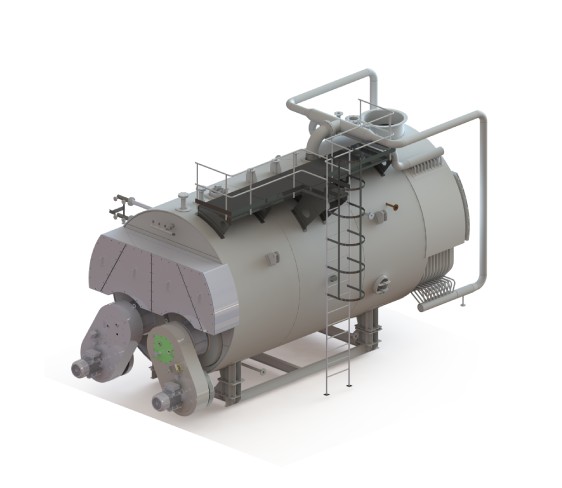Smoke/Fire Tube Boiler
Description
A three-pass fire-tube boiler is a type of steam or hot water boiler that uses hot gases from combustion to pass through the tubes, transferring heat to the water or steam on the outside. Here’s a brief overview of its features and functioning:
Design
- Smoke Tubes: The boiler consists of a series of tubes (smoke tubes) that carry the hot gases from the combustion process through the water.
- Water Shell: Surrounding the smoke tubes is a shell filled with water. The heat from the gases transfers to the water, converting it to steam.
- Fuel Source: Typically, these boilers can burn various fuels, including natural gas, oil, or biomass.
Specifications
Key Features:
-
Three Pass Design:
- First Pass: Hot flue gases enter the boiler and flow through the tubes, transferring heat to the water.
- Second Pass: Gases reverse direction and flow back through a second set of tubes, enhancing heat transfer.
- Third Pass: Gases exit through the final set of tubes, maximizing heat exchange before leaving the system.
-
Efficiency:
- The design improves thermal efficiency by maximizing the surface area for heat exchange, often reaching efficiencies above 90%.
-
Compact Size:
- Typically, more compact than water-tube boilers, making them suitable for smaller installations.
-
Ease of Maintenance:
- Generally simpler to clean and maintain due to their design.
-
Applications:
- Fire smoke tube boilers are commonly used in industries like food processing, textiles, and manufacturing, where steam is essential for various processes.
Working Principle:
- Combustion: Fuel is burned in the furnace, producing hot gases.
- Heat Transfer: The hot gases pass through the tubes, transferring heat to the water outside the tubes.
- Steam Generation: The heated water turns into steam (if applicable), which is then directed to the process or heating system.
- Exhaust: The cooled flue gases exit the boiler through the stack.
Advantages:
- High Efficiency: Effective heat recovery leads to lower fuel consumption.
- Lower Emissions: Improved combustion efficiency can result in reduced emissions.
- Versatile Fuels: Can burn various fuels, including natural gas, oil, and biomass.
Considerations:
- Sizing: Proper sizing is crucial for efficiency and operational effectiveness.
- Water Treatment: Proper water treatment is essential to prevent scaling and corrosion.


